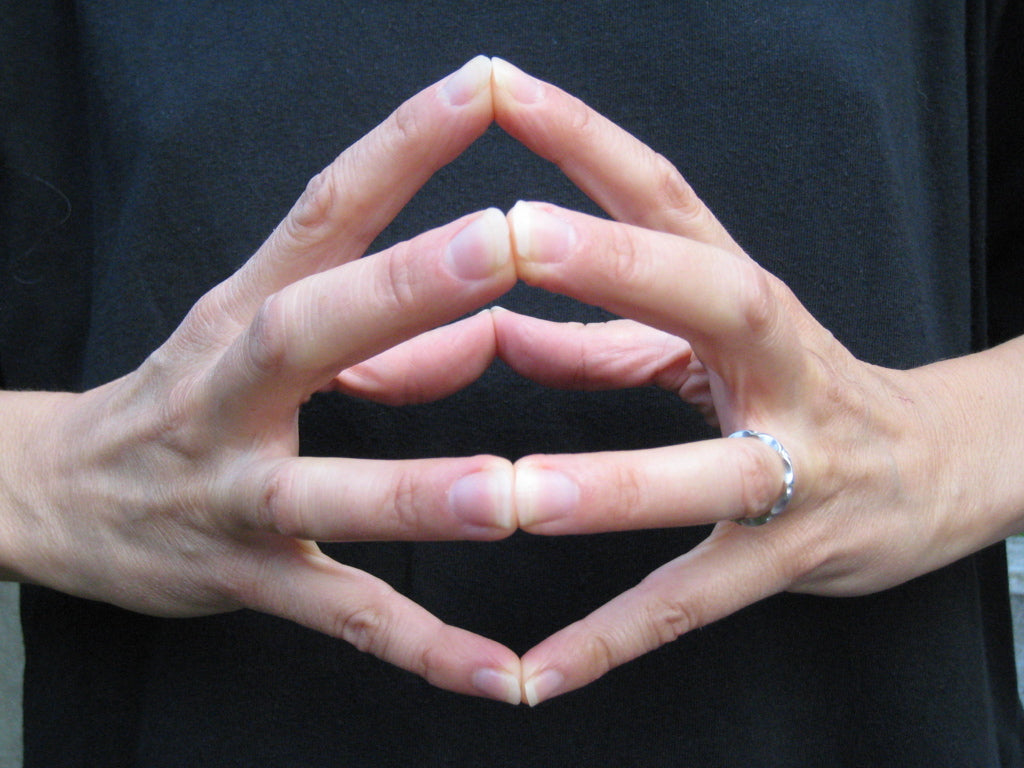
Hakini Mudra: A Simple Hand Gesture with Immense Benefits for the Mind
In our traditional system, there exists a mudra or hand gesture known as Hakini Mudra, also referred to as the 'Brain Power Mudra' or 'Mudra for the Mind.' It is considered a potent gesture that enhances brain power.
This mudra proves beneficial for individuals engaged in substantial mental work, including multitasking, which often leads to stress and mental fatigue. It is equally helpful for those dealing with forgetfulness, as it significantly improves concentration, memory, and focus.
Hakini Devata
Hakini is mentioned as a devata (deity) in our scriptures, specifically in Sri Lalita Sahasranama verse 108, which reads: “…hardrannaika rasika Hakini rupa dharini,” signifying her as the one who assumes the form of Hakini and delights in offerings of saffron-flavored rice.
For those familiar with the 1000 holy names of Devi mentioned in Sri Lalita Sahasranama, verses 101 to 110 are particularly noteworthy as they reference the six chakras in our body and the presiding devata for each chakra. Verse 103 pertains to the Manipuraka chakra and the divine mother Lakini, presiding over flesh in living creatures. Similarly, Kakini resides in the Svadishthana chakra, governing fatty substances, while Hakini, the divine mother, presides over the marrow of all beings.
Hakini's form is associated with the ajna, or the third eye, chakra, positioned as the center of imagination and instincts. As the goddess of the third eye, Hakini is depicted as a two-petal lotus, symbolizing the brain's two hemispheres. Practicing the Hakini Mudra helps balance the mind and pranas (vital energies), fostering enhanced concentration and cognitive abilities.
How to Practice Hakini Mudra
Practicing the Hakini Mudra is simple:
- Sit comfortably in a relaxed meditation or yoga posture.
- Breathe naturally, focusing on your breath.
- Place your hands on your thighs or knees, palms facing upward.
- Slowly raise your hands, bringing them closer together with palms facing each other.
- Allow the fingertips of your right hand to touch those of your left hand, ensuring each finger corresponds with its counterpart on the opposite hand.
- Lift your joined hands and position them near your forehead, the location of the ajna or sixth chakra.
- Gaze upward, focusing on the chakra.
- Inhale gently while placing your tongue against the roof of your mouth.
- Relax your tongue as you exhale.
By bringing the fingertips of both hands together, you establish a connection that facilitates the flow of energy between the two sides of your brain and body.
Hakini Mudra can be practiced for 30-35 minutes at a stretch or for 12 minutes three times a day. Performing this mudra during the early hours of sunrise provides optimal benefits. Consistent practice over at least two months will yield noticeable results.
This mudra not only balances breathing and brain aeration but also helps regulate blood pressure, benefiting heart and lung functions. In Ayurvedic terms, it harmonizes the Prana vata – Udana vata – Vyana vata – Avalambaka kapha – Ranjaka pitta axis coordination.
In summary, incorporating Hakini Mudra into your routine, alongside Ayurvedic treatments, medicines, yoga, and pranayama, creates a powerful combination to address various health issues.
— Dr. Y.S. Raghuram, MD (Ay), and Dr. Manasa, B.A.M.S

7 comments
Sir Etni Sardi me
How
How
How
How